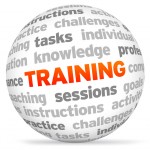Attending a Training Course
 WHAT IS IT?
WHAT IS IT?
This free guide provides some valuable tips for attending a training course, regardless of whether this is classroom based or online.
Why use our ‘attending a training course’ guide?
An individual can normally gain valuable learning and payback from attending a well selected training course. However, the level of learning and payback to the individual’s development and performance can be optimised by adopting the advice given in the following tips.
BEST PRACTICE GUIDELINES
1. WHEN TO USE
Timing is very important. Try to minimise the gap between attending your training course and actually applying the learning to actual job accountabilities. The greater the time gap between the two experiences, the less value tends to be obtained from the learning.
2. HOW TO USE
Agree a Smart Objective with your manager prior to your training course attendance that clearly identifies an outcome for your learning and which can be measured at a suitable time.
i.e.
Pre Training Course
- Clearly define the learning need, including timing and support requirements
- Consider the most suitable delivery options, aiming for a practical and realistic balance
- Agree and record a smart objective that defines the focus to which the learning will be applied to job accountabilities and how this will be measured
- Research and identify the most suitable blend of options aligned to the learning objective and schedule implementation or attendance accordingly
- Fulfil all specified pre-course requirements e.g. pre-course work etc
- Brain-storm with your manager or learning buddy the key issues, questions or considerations you should pursue during the event to maximise the value to be gained from the experience
During the Training Course
- Ensure you advise the workshop facilitator of your learning objective so this is fully understood at the start of the course, so it can be addressed, and delivery optimised
- Maximise the value to you of each element of the course through careful listening, engagement in activities, questions about application, reflection aligned to your learning objective etc
- Network with other participants to share learning during and after event
- Evaluate the initial experience against your learning objective upon completion of the course and decide the extent to which it has been met your learning objective. For example, how confident do you feel in being able to meet the agreed objective, and could other learning options such as coaching help to increase confidence and delivery of the objective?
Post Training Course
- De-brief your manager and discuss your evaluation of the course for impact on your objective, and the possible need for further support
- Discuss with your manager the impact of other learning options such as coaching
- Volunteer to share your learning with others at team meetings, presentations or knowledge repositories
- Share your experience and evaluation with your learning buddy and focus on methods to maximise job performance
3. EVALUATION
As part of the preparation process, you should agree an objective that reflects the proposed impact on a specific project or job accountability.
i.e. – an objective such as
- “Improve my presentation skills”, just focuses on the development of this skill, whereas the following focuses on the application of the new skills:
- “Obtain appropriate approval for the XYZ Business Plan by (date) through clear presentation of project proposals”.
4. TOP TIPS FOR ATTENDING A TRAINING COURSE
- Schedule your learning as close as possible to when you need to apply it – just in time training, bearing in mind you may have selected several learning options
- Explore an e-learning or online learning option before considering a classroom programme, as they may often satisfy your development need and save you time
- Ensure you create a smart objective together with evaluation criteria
- Consider blending classroom or e-learning with other options such as:
- Coaching from manager or an agreed person
- Review with your learning buddy or a colleague of your choice
- Reading and / or web research
- Increase the value of your learning by discussing it with your team
- Produce a report of key learning points and discuss with team
- Encourage the individual to consider a range of options rather than ‘just classroom”
- Encourage the individual to balance length and cost of training with the payback benefits
- Before implementation – agree objective, evaluation method, provide support and agree date for follow-up review
- Post implementation – listen carefully to the feedback and individual’s confidence to apply the learning to satisfy the agreed objective and be ready to provide additional support as required
- Encourage individuals to share learning with colleagues and team members in order to increase the scope of the payback and further nurture a learning environment.
We hope this training course attendance guide will assist your personal development and help to build your capability and performance.
YOUR NEXT STEP
1.
Related Free Guides. You may find some of our other Free Guides can aid your Personal or Career Development. Click on any of the Titles in the table below to link to the Free Guide of your choice or click HERE to return to the free guides web page
Experience Individuals
Undergraduates & Graduates
2.
Get a PDF Download. See the link at top of this page to receive a PDF of this Guide and we will also send you a Free Tool designed to improve Time Management Skills.
3.
Make a suggestion. For any additions to our series of Free Guides please send your suggestion to enquiry@iiyc.biz.
4.
Written by Stephen A Isherwood



